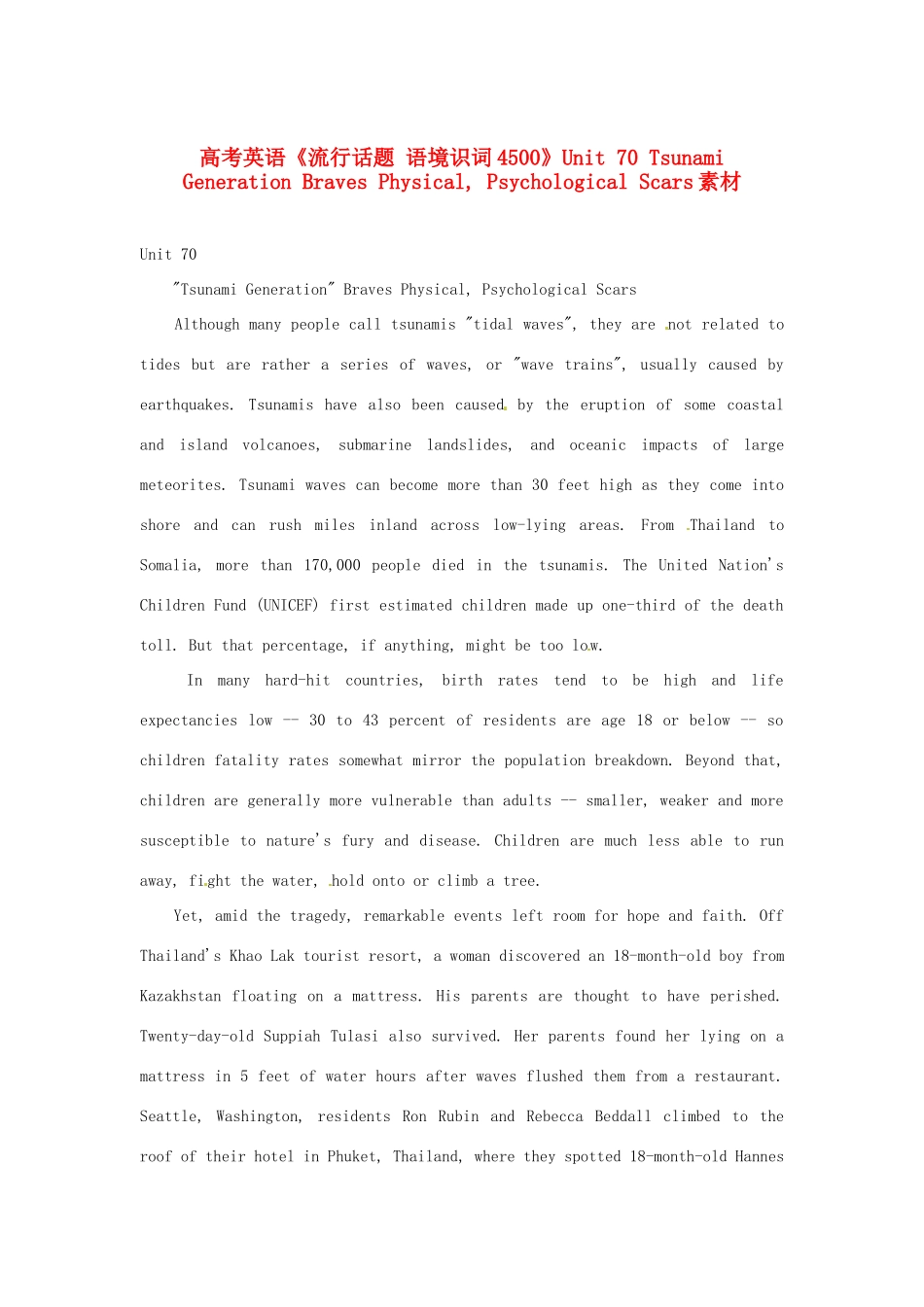高考英语《流行话题 语境识词 4500》Unit 70 Tsunami Generation Braves Physical, Psychological Scars 素材Unit 70 "Tsunami Generation" Braves Physical, Psychological Scars Although many people call tsunamis "tidal waves", they are not related to tides but are rather a series of waves, or "wave trains", usually caused by earthquakes. Tsunamis have also been caused by the eruption of some coastal and island volcanoes, submarine landslides, and oceanic impacts of large meteorites. Tsunami waves can become more than 30 feet high as they come into shore and can rush miles inland across low-lying areas. From Thailand to Somalia, more than 170,000 people died in the tsunamis. The United Nation's Children Fund (UNICEF) first estimated children made up one-third of the death toll. But that percentage, if anything, might be too low. In many hard-hit countries, birth rates tend to be high and life expectancies low -- 30 to 43 percent of residents are age 18 or below -- so children fatality rates somewhat mirror the population breakdown. Beyond that, children are generally more vulnerable than adults -- smaller, weaker and more susceptible to nature's fury and disease. Children are much less able to run away, fight the water, hold onto or climb a tree. Yet, amid the tragedy, remarkable events left room for hope and faith. Off Thailand's Khao Lak tourist resort, a woman discovered an 18-month-old boy from Kazakhstan floating on a mattress. His parents are thought to have perished. Twenty-day-old Suppiah Tulasi also survived. Her parents found her lying on a mattress in 5 feet of water hours after waves flushed them from a restaurant. Seattle, Washington, residents Ron Rubin and Rebecca Beddall climbed to the roo...

